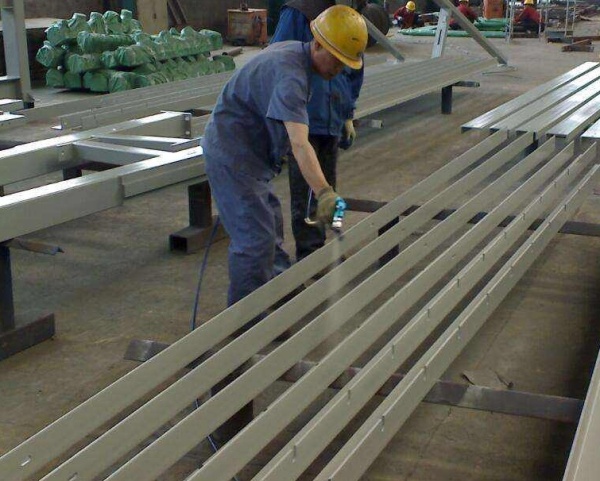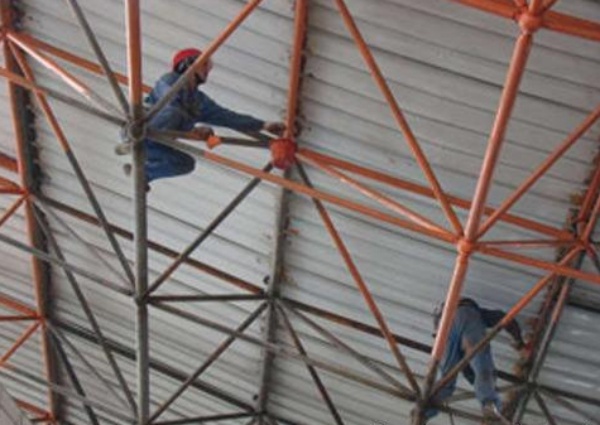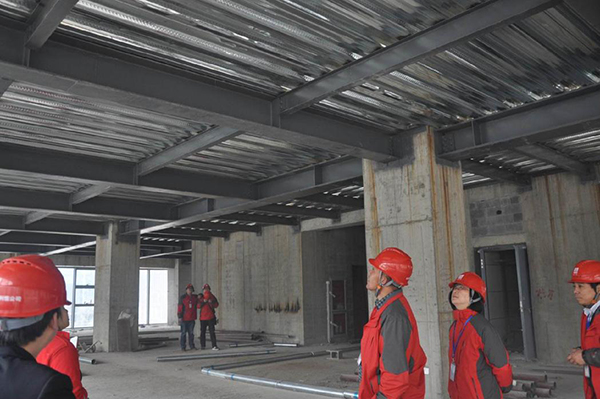Fire protection method of steel structure workshop
- 27 Mar 2020
- steel structure
The advantages of high strength and good ductility of the steel structure determine that the characteristics of light weight, good seismic performance and large bearing capacity. At the same time, the steel structure can be processed in the field, the construction period is short, and the material is recyclable. Therefore, steel structure buildings have been widely used. But steel structures have one fatal weakness: poor fire resistance. In order to protect people's lives and property safety, fire protection methods are used in actual steel structure engineering.

1.Heat resistance method
The heat resistance method is divided into a spray method and an encapsulation method according to the heat resistance of the fireproof coating and the heat resistance of the sealing material. The spray method protects the building by applying or spraying a fire-resistant coating. Encapsulation can be divided into hollow encapsulation and solid encapsulation.
1.1 Spray method
Generally, fire-resistant coatings are applied or sprayed on the surface of steel to form a fire-resistant and heat-insulating protective layer to increase the fire resistance of steel structures. This method has the advantages of simple construction, light weight, long fire resistance time, and is not limited by the geometry of the steel member. It has good economy and practicability and is widely used. There are many types of fire-resistant coatings for steel structures, and they are broadly divided into two categories: one is a thin-coated fire-resistant coating (type B), which is an intumescent fireproof material for steel structures; the other is a thick-coated fire-resistant coating (H).
Class B fire-resistant coating, coating thickness is generally 2-7mm. The base material is an organic resin, which has a certain decorative effect and expands and thickens at high temperatures. Fire resistance can reach 0.5 ~ 1.5h. The thin coating type fire-resistant coating for steel structure has a thin coating, light weight and good vibration resistance. For indoor exposed steel structures and light roof steel structures, when the fire resistance limit is specified to be 1.5 hours or below, thin-coated steel structure fireproof coatings should be used. The coating thickness of Class H fire-resistant paint is generally 8-50mm. Grainy surface. The main component is an inorganic thermal insulation material, which has a lower density and a lower thermal conductivity. Fire resistance can reach 0.5 ~ 3.0h. Thick coating fire-resistant coatings for steel structures are generally non-combustible, resistant to aging, and more durable. For indoor concealed steel structures, high-rise all-steel structures and multi-storey plant steel structures, when the fire resistance limit is more than 1.5h, thick-coated steel structure fireproof coatings should be selected.

1.2 Encapsulation
1.2.1 Hollow encapsulation method: Generally, fireproof boards or refractory bricks are used to enclose the steel members along the outer boundary of the steel members. Most of the steel structure workshops of Sinopec Industry use the method of masonry refractory bricks to wrap steel members to protect the steel structure. The advantages of this method are high strength and impact resistance, but the disadvantages are that it takes up more space and is more troublesome to construct. Use fire-resistant lightweight plates such as fiber-reinforced cement boards, gypsum boards, vermiculite boards, etc. as fire-resistant outer layers. The method of box-type wrapping of large steel components has the advantages of flat and smooth decoration surface, low cost, small loss, no environmental pollution, aging resistance, etc., and it has good promotion prospects.
1.2.2 Solid encapsulation method: Generally, the steel members are wrapped by pouring concrete to completely seal the steel members. For example, the steel column of Shanghai Pudong World Financial Building adopts this method. Its advantages are high strength and impact resistance, but its disadvantages are the large space occupied by the concrete protective layer and the troublesome construction, especially the construction on steel beams and diagonal braces.

2. Water cooling method
The water cooling method includes water leaching cooling method and a water-filled cooling method.
2.1 Water leaching cooling method
Water leaching cooling method is to arrange an automatic or manual spray system on the upper part of the steel structure. When fire occurs, the sprinkler system is activated to form a continuous water film on the surface of the steel structure. When the flame spreads to the surface of the steel structure, moisture evaporates to take away heat and delay the steel structure building to reach its limit temperature. Water cooling method is used in the school of civil engineering of Tongji University.
2.2 Water-filled cooling method
The water-filled cooling method is to fill water in a hollow steel member. Through the circulation of water in the steel structure, the heat of the steel itself is absorbed. Therefore, the steel structure can keep a low temperature in the fire, and will not lose the bearing capacity due to excessive heating. To prevent rust and icing, rust inhibitor and antifreeze should be added to the water. The steel columns of the 64-story American Iron and Steel Corporation building in Pittsburgh, U.S.A. are cooled by water-filled cooling.